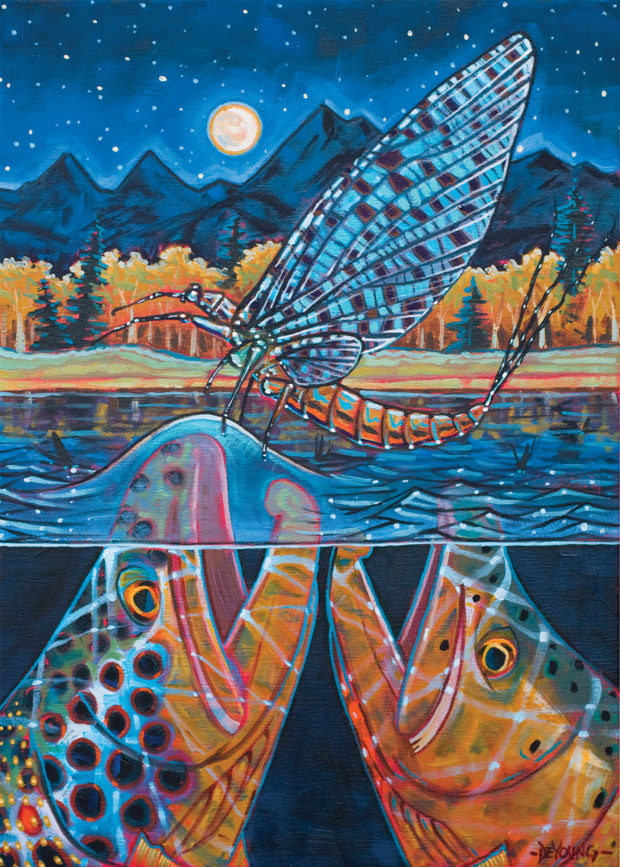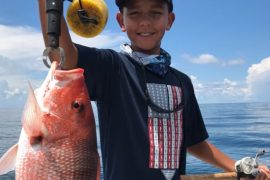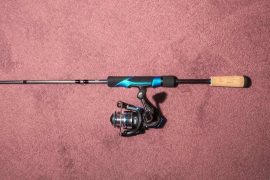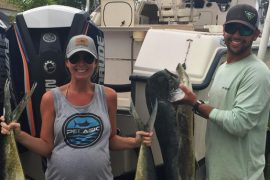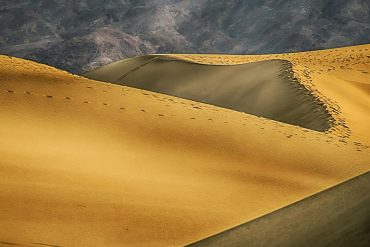
From the Pacific Coast to alpine lakes, the Southwest offers a wide variety of springtime fishing opportunities.
[by Al Ritt]The Southwest offers a terrific range of spring fly fishing opportunities. The region encompasses waters from the Pacific Ocean to the Rocky Mountains: reservoirs, alpine lakes, freestone streams, spring creeks, and tailwaters. In addition to the variety of water types, trout are available from near sea level to above an elevation of 10,000 feet. These elevation changes afford us the option of extending spring fishing by beginning our season at lower elevations and moving higher as the weather warms.
For example, here in Colorado, eager spring fishermen begin their seasons in late February or early March on local streams because ice does not come off the alpine lakes in the headwaters of these drainages until late June or even as late as mid-July. Habitat and conditions this diverse result in a wide array of fishing options. Many patterns are effective across this broad spectrum of water types and climates, but timing varies greatly. Consulting a hatch chart for the specific area you’ll be fishing will help determine the timing and sizes of insects you’re likely to encounter.
Freestone streams are typically fishable early in spring, then succumb to runoff and may not be easily or safely fished again until summer. These waters originate from snowmelt, alpine springs, and marshes, and are often in deep canyons with steep gradients. Freestone streams are subject to rapid influxes of rain and snowmelt. They tend to be the most challenging fisheries in the spring because they are easily altered by rain or snowmelt. The additional water raises levels and current velocities, and carries sediment and debris. Sediment reduces visibility, and debris can make wading hazards for unwary anglers. Cold snowmelt and rain can also lower the overall water temperature and reduce the metabolism of coldwater organisms such as fish and insects.

Hook: Daiichi 1730, sizes 6 to 2.
Thread: Orange 3/0 (210 denier).
Weight: Medium lead dumbbell eyes.
Antennae: UV orange Krystal Flash.
Eyes: Black round rubber.
Claws and arms: Orange foam claws mounted on orange barred rubber legs.
Carapace: Mottled orange Thin Skin.
Underbody: Orange yarn.
Legs: Whiting Eurosaddle or Woolly Bugger Hackle, grizzly dyed orange.
Rib: Hot orange Ultra Wire.
Body: Burnt orange Crawdub SLF Dubbing.
Spring creeks are generally not so susceptible to runoff, because they originate underground. This moderates the water temperature, making them fishable year-round if there is no closed season. Spring creeks tend to be found at low to middle elevations, 6,000 feet or less. They are also typically found in flatter terrain with shallower gradients, so flows are moderate and weed growth is plentiful.
Tailwaters act much like spring creeks. However, since they occur below impoundments, they tend to be located in the same steep terrain as freestone streams. In the case of bottom-release dams, the water flowing into tailwaters has moderated…

